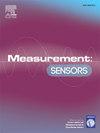Field-axis measurement of an AC-powered magnet by a single stretched wire
Q4 Engineering
引用次数: 0
Abstract
Magnetic measurements of superconducting magnets at room temperature are performed for quality control and alignment, aiming to position the cold mass accurately, namely the assembly of one or more magnets in its cryo-vessel. The main challenge in performing these measurements is related to the sensitivity of the transducer, as the field values achievable in the magnet bore are in the 1 mT range. The single stretched-wire method is a proven technique for measuring DC-powered normal-conducting and superconducting accelerator magnets. It is vastly used to locate the magnetic axis in quadrupole magnets and higher-order magnets for their alignment and positioning in the accelerator. However, it fails to provide accurate measurements when used to measure superconducting magnets at room temperature because the typical magnet current levels are three orders of magnitude lower than the nominal level used in operation, leading to field values scaling by the same order of magnitude. The problem of the alignment of superconducting quadrupole magnets at room temperature has already been addressed in the literature by adopting alternating current (AC) magnet powering to enhance measurement sensitivity. This paper presents a comprehensive overview of the single stretched-wire method with AC magnet powering, showcasing the different performance compared with the DC powering technique. To further validate the method, a case study of a superconducting quadrupole magnet is presented, and the results are compared against those from a rotating coil scanner.
用一根拉伸导线测量交流磁体的场轴
在室温下对超导磁体进行磁测量以进行质量控制和校准,目的是精确定位冷质量,即在其冷冻容器中组装一个或多个磁体。执行这些测量的主要挑战与换能器的灵敏度有关,因为磁体孔中可实现的场值在1mt范围内。单线拉伸法是测量直流电正常导体和超导加速器磁体的一种成熟技术。它广泛用于四极磁体和高阶磁体的磁轴定位,用于它们在加速器中的对准和定位。然而,当用于测量室温下的超导磁体时,它不能提供准确的测量,因为典型的磁体电流水平比运行中使用的标称水平低三个数量级,导致场值缩放相同的数量级。超导四极磁体在室温下的对准问题已经在文献中得到了解决,采用交流磁体供电来提高测量灵敏度。本文全面介绍了交流磁体供电的单线拉伸法,并比较了其与直流供电的不同性能。为了进一步验证该方法,给出了超导四极磁体的实例研究,并将结果与旋转线圈扫描仪的结果进行了比较。
本文章由计算机程序翻译,如有差异,请以英文原文为准。
求助全文
约1分钟内获得全文
求助全文
来源期刊

Measurement Sensors
Engineering-Industrial and Manufacturing Engineering
CiteScore
3.10
自引率
0.00%
发文量
184
审稿时长
56 days
 求助内容:
求助内容: 应助结果提醒方式:
应助结果提醒方式:


